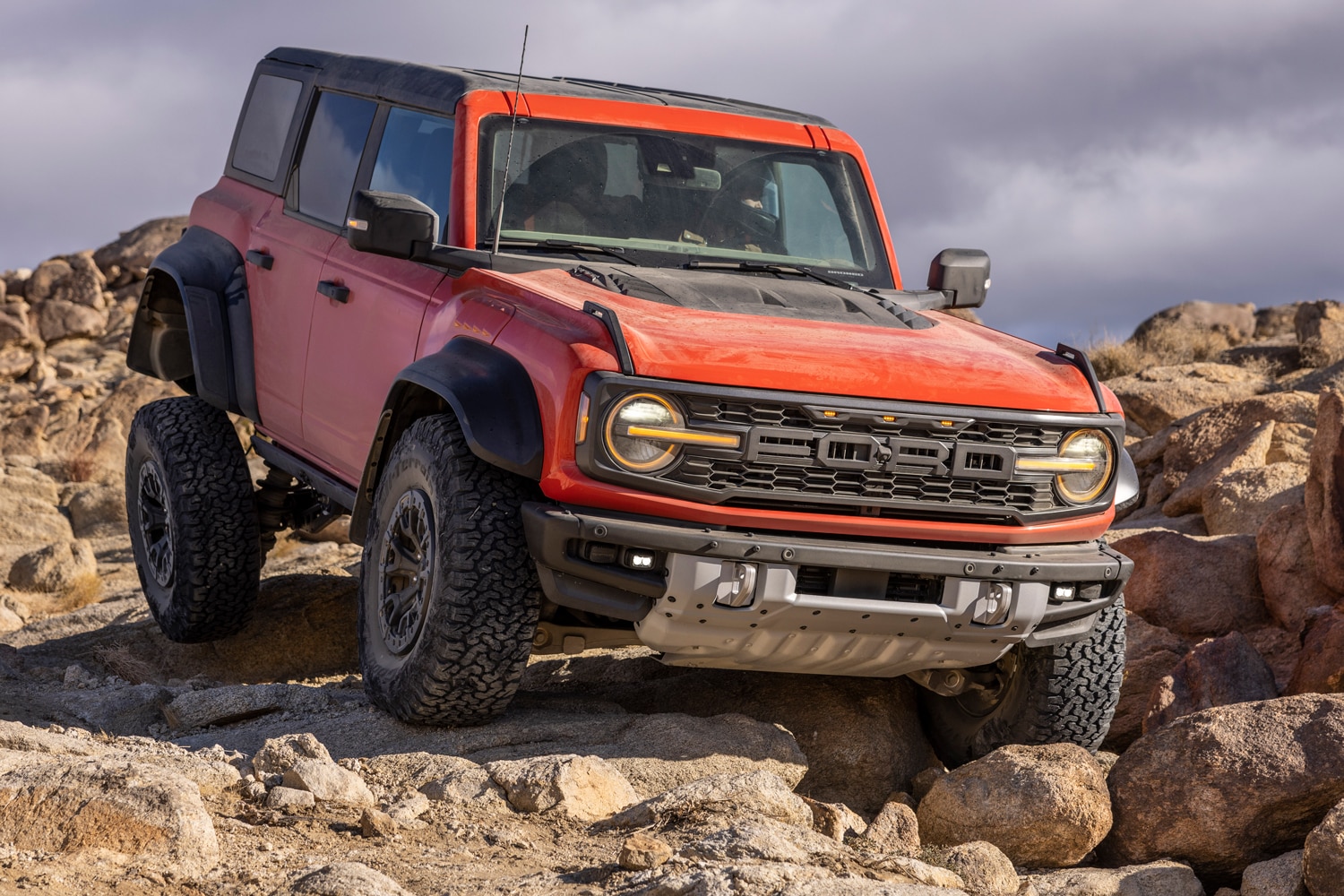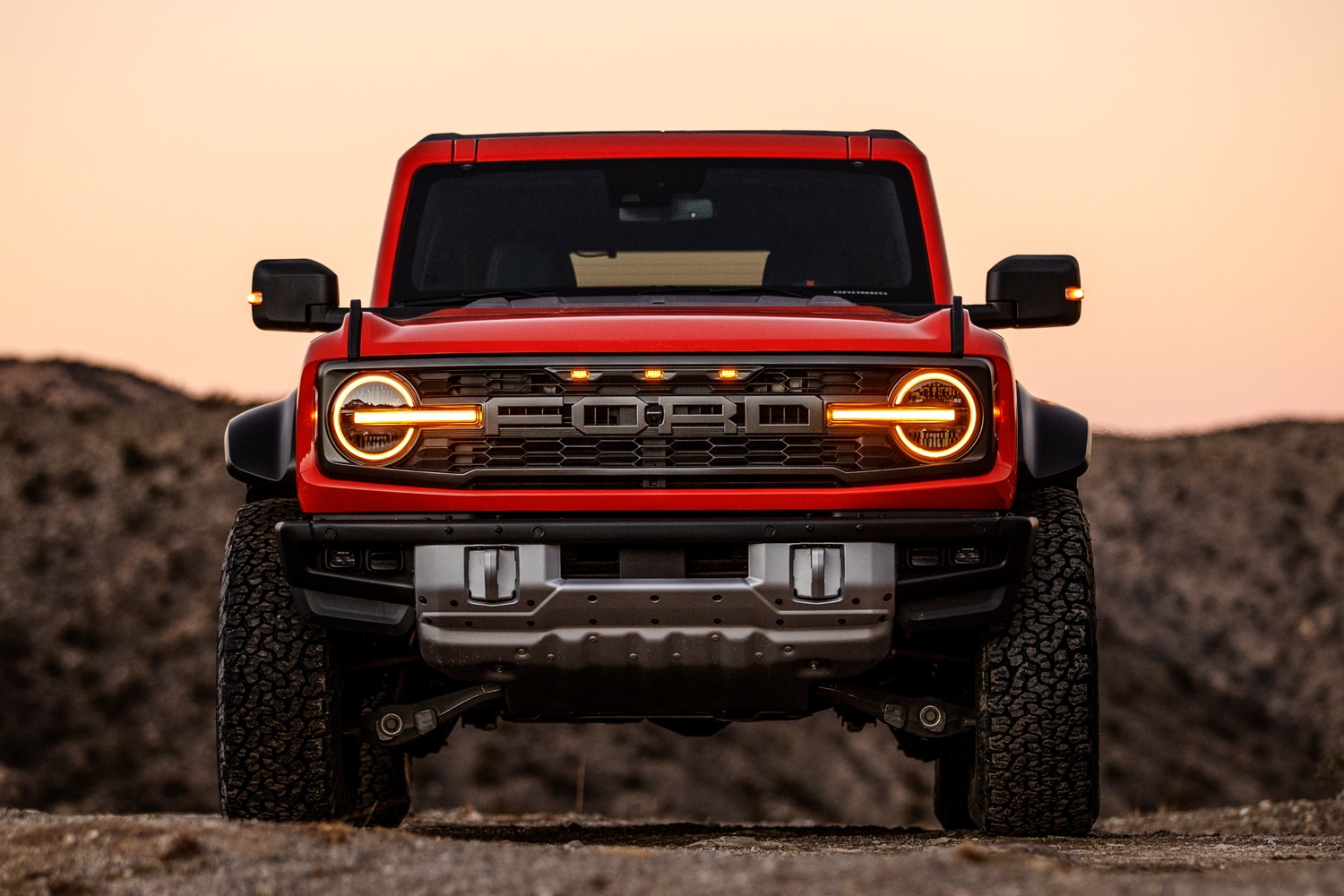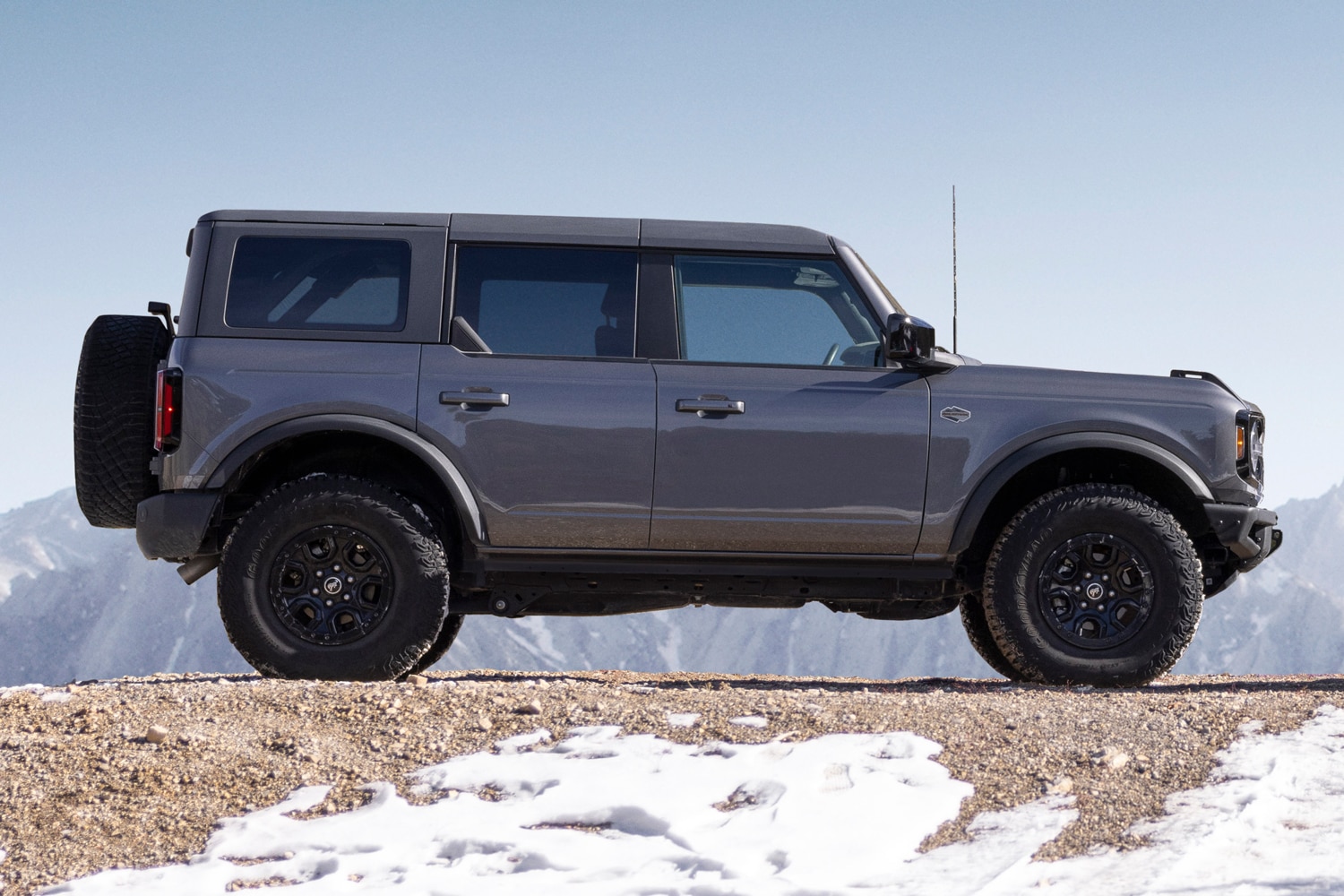First Look: 2022 Ford Bronco Raptor Is an Off-Roading Beast
The toughest steed in the Ford SUV stable just got tougher.
It was only a matter of time before Ford linked its retro-themed Bronco SUV with the hottest performance badge from its modern off-road lineup. The 2022 Ford Bronco Raptor melds the rugged, go-anywhere character of the four-door SUV with the dune-bashing prowess of the F-150 Raptor pickup, creating a high-speed desert runner that calls to mind the Baja-winning Broncos of the late 1960s and early 1970s.
One look at the Bronco Raptor and it's clear to see what sets it apart from other versions of the 4x4 sport-utility. The Raptor measures up to 9.8 inches wider than its stablemates and has enormous fender flares covering a set of 37-inch tires cribbed from the Raptor pickup. It's so wide that it requires the installation of amber-colored marker lights, a detail typically reserved for heavy-duty pickups and commercial vehicles.
It's also considerably taller than other Broncos, with 13.1 inches of ground clearance (1.6 inches more the off-road-oriented Bronco Sasquatch) and an exceptional amount of wheel travel (13 inches up front, 14 inches in the rear) and Ford's latest High-Performance Off-Road Stability Suspension, or HOSS 4.0, which features Fox Live Valve adaptive dampers designed to soak up the big hits that are part of high-speed off-roading.
 Ford
Ford
Pop the top on the Bronco Raptor and you'll discover reinforcing braces at the B- and C-pillars, which help improve the SUV’s structural rigidity by more than 50 percent compared with standard four-door models. Underneath the Raptor, a beefier four-wheel-drive transfer case and a pair of locking differentials have been strengthened to cope with rugged terrain and the twin-turbo 3.0-liter V-6 engine that Ford promises will make more than 400 horsepower.
All of this gear means that the Ford Bronco Raptor can easily withstand the kind of abuse that goes hand in hand with bombing across the open sage at speeds that would stagger a lesser SUV. It's an impressive piece of off-road kit that has few direct competitors outside of the V-8-powered Jeep Wrangler Rubicon 392 Xtreme Recon.
Curious to find out more about how the Bronco Raptor sets itself apart from the rest of the pack when leaving the asphalt in the rearview? Let's take a closer look at the details of this hardcore trail rig.
 Ford
Ford
Why Do I Want 37-inch Tires?
There's no question that the Raptor's 37-inch rubber does a lot to improve the Bronco’s capabilities driving across mud, sand, and rock. The BFGoodrich KO2 all-terrain tires are two inches larger in diameter than the 35-inch Goodyears that come with the Sasquatch package. They help improve the vehicle's approach angle to 47.2 degrees, boost its break-over angle to 30.8 degrees, and increase its departure angle to 40.5 degrees. These represent gains of up to 4.5 degrees over the Sasquatch’s measurements. What’s more, Ford offers two different 17-inch wheel designs with beadlock rings, which firmly grip the KO2s and prevent them from separating from the rim in extreme off-road conditions.
 Ford
Ford
How Do the Bronco's Live Valve Dampers Work?
Ford derived the Bronco Raptor's suspension technology from its desert racing program, which has been campaigning the competition-only Bronco R in the Baja 1000 and other off-road events for several years. The 3.l-inch-diameter dampers, developed with the off-road experts at Fox, use internal bypasses to provide both a supple ride and the stiffness to absorb big impacts. External reservoirs connected to the rear dampers help dissipate heat. The Live Valve system monitors suspension movements and adapts its compression damping to the current driving situation, including when the Bronco Raptor gets airborne. The ultimate goal? Providing a damper that is capable of absorbing the force and heat of full-speed desert runs without sacrificing on-pavement comfort and control in daily driving or when crawling at slower speeds over large obstacles.
 Ford
Ford
Why Is a Wide Track Better Off-Road?
Ford extended the Bronco’s track—the distance between wheels on the same axle—by 8.2 inches up front and 8.6 in the rear partially to accommodate the Raptor’s large tires, but also to tuck in the hardcore axles beneath the chassis. The use of a Dana 50 Heavy-Duty unit at the rear and a Dana 44 axle up front provides the Raptor with larger, stronger ring gears that can better withstand the abuse of harsh terrain and the engine’s torque.
That extra width also translates into better stability at high and low speeds, as the expanded track makes the Raptor less likely to roll over. Whether rock crawling or demolishing dunes, spreading the Bronco Raptor's mass out across a wider platform provides a more planted driving experience.
 Ford
Ford
What About the Ford Bronco Wildtrak?
Elsewhere in the lineup, Ford offers the high-performance Wildtrak, which includes the Sasquatch package as standard equipment as well a milder HOSS suspension package and a 330-hp 2.7-liter V-6. The Wildtrak still represents a good bargain for those interested in a quick, capable off-road SUV, as its $49,275 price is considerably lower than the $69,995 ask for the more muscular Raptor. It also has the bonus of being available in a two-door body style, versus the four-door-only Bronco Raptor.
Written by humans.
Edited by humans.
 Benjamin Hunting
Benjamin HuntingBenjamin Hunting is a writer and podcast host who contributes to a number of newspapers, automotive magazines, and online publications. More than a decade into his career, he enjoys keeping the shiny side up during track days and always has one too many classic vehicle projects partially disassembled in his garage at any given time. Remember, if it's not leaking, it's probably empty.
Related articles
View more related articles